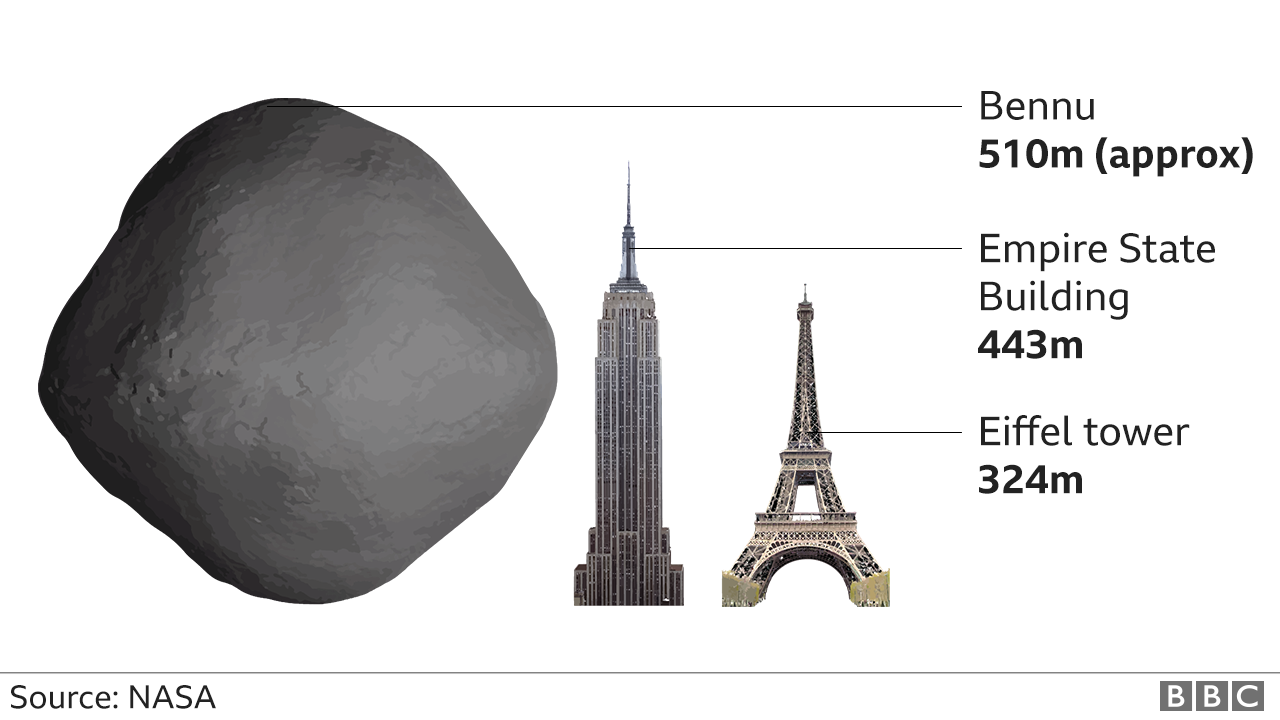Osiris-Rex: Nasa asteroid probe ready to return to Earth after leak
- Published

Bennu - the asteroid could hold clues as to how the Solar System was formed
A Nasa probe sent to collect rock from an asteroid several hundred million kilometres from Earth is back on track after some technical concerns.
Officials behind the Osiris-Rex probe, which landed on Bennu earlier this week, were worried after a rock wedged open the door of a container.
This meant that samples were spilling out from the craft.
But now the space agency says the rock samples have been safely sealed and the probe is ready to return to Earth.
"We are here to announce today that we've successfully completed that operation," said Rich Burns, the mission's project manager.
The samples will only be examined after the spacecraft completes its long journey home - it will touch down in September 2023.
Allow X content?
This article contains content provided by X. We ask for your permission before anything is loaded, as they may be using cookies and other technologies. You may want to read X’s cookie policy, external and privacy policy, external before accepting. To view this content choose ‘accept and continue’.

Osiris-Rex landed for just a few seconds last week on 500m-wide Bennu, some 320 million kilometres (200 million miles) from Earth.
The craft is believed to have collected some 400g (14oz) of fragments, but particles were escaping due to the wedged door.
Closing the compartment was a delicate process that took place over two days. Due to the probe being millions of kilometres away, it takes more than 18 minutes for its transmissions to reach Earth.
Sampling an asteroid: This image sequence is speeded up and repeated
Scientists hope the mission will shed light on how the Solar System began 4.5 billion years ago. Asteroids contain debris from the formation of the Solar System.
The spacecraft launched in 2016 and will begin its journey back to Earth next March.


- Published24 October 2020
